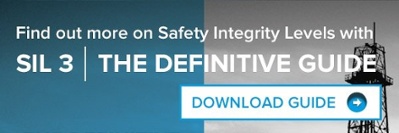According to the technology used, industrial production systems are divided into manufacturing facilities and process plants. Among the latter, there are Oil & Gas, petrochemical, chemical, pharmaceutical and energy production. Clearly, a critical matter such as Safety becomes even more important when it is related to process plants where the consequences of an accident can be very costly.
Instrumentation in process plants
Safety is not a secondary matter when designing process plants, and must be taken into consideration at the project feed stage. All instruments, including intrinsically safe instrumentation, that are used in Safety Instrumented System (SIS), typically a combination of process sensors, interfaces, logic solver and final elements, are subject to very strict rules and are also regulated by IEC/EN 61508/61511 standards. These standards aim to define and reduce the inherent risk with the implementation of Functional Safety: the aspects of the overall Safety and Security of a system that depend on the proper functioning of the equipment in response to any input; including those deriving from possible operators’ mistakes, hardware faults, software malfunctions or change in environmental conditions.
Project documentation for safety lifecycle
The aforementioned standards provide a series of stages, and related documentation; the so-called Safety LifeCycle. Starting from the Hazard and Risk Analysis, considering other Layers of Protection leading to the definition of additional Risk Reduction and requirements for a Safety Instrumented systems; from their design and realization to their installation, commissioning and and validation; from the operations and maintenance, modification to the final decommissioning of the SIS.
All of those steps are normative requirements for complying to the IEC 61511 standard and needs to be supported with the following documentation:
- The results of the Hazard and Risk Analysis, including the related assumptions;
- The equipment & instrumentation used for the SIF together with it safety integrity and functionality requirements;
- The modification procedure often referred to as MOC (management of change);
- The Safety manuals;
- Design, Installation and commissioning, Test, Verification and Validation Plan (with reference to integrity, functionality, HW and SW requirements);
- Application Program description, logbook, reference documents and details;
- Proof testing and inspection procedures including the proof test coverage requirements;
- Failure records of the field instruments used, including analysis of the Random, Common Cause and Systematic failures;
- Functional Safety Management procedure describing responsibilities and activities for maintaining Functional Safety of the Safety Instrumented System;
- Functional Safety Assessments procedure and reports
There are 3 key documents needed for a successful and correct functioning of the Safety Instrumented System in able to perform and achieve the necessary risk reduction:
- The Functional Safety Management and Safety plan;
- The Verification and Validation plan;
- The Safety Requirements Specification (SRS).
Safety requirement specifications
Especially the Safety Requirement Specification or SRS is a crucial and critical element to achieve Functional Safety. The SRS shall be derived from the allocation of SIF and from those requirements identified during the process hazard and risk analysis. The SRS requirements shall be expressed and structured in a clear, verifiable, maintainable and feasible way. Furthermore, the SRS shall be written to aid comprehension and interpretation by those who need to utilize the information at any phase of the life-cycle.The IEC61511 defines 29 parameters per Safety Instrumented Function (SIF) that shall be sufficient to design the SIS and shall include a description of the SIF intent and approach applied during the development of the SIS safety requirements as applicable. A more detailed description with some practical examples are available in chapter 8 (SRS) of the G.M. International SIL manual – Safety Instrumented System, 4th edition.


